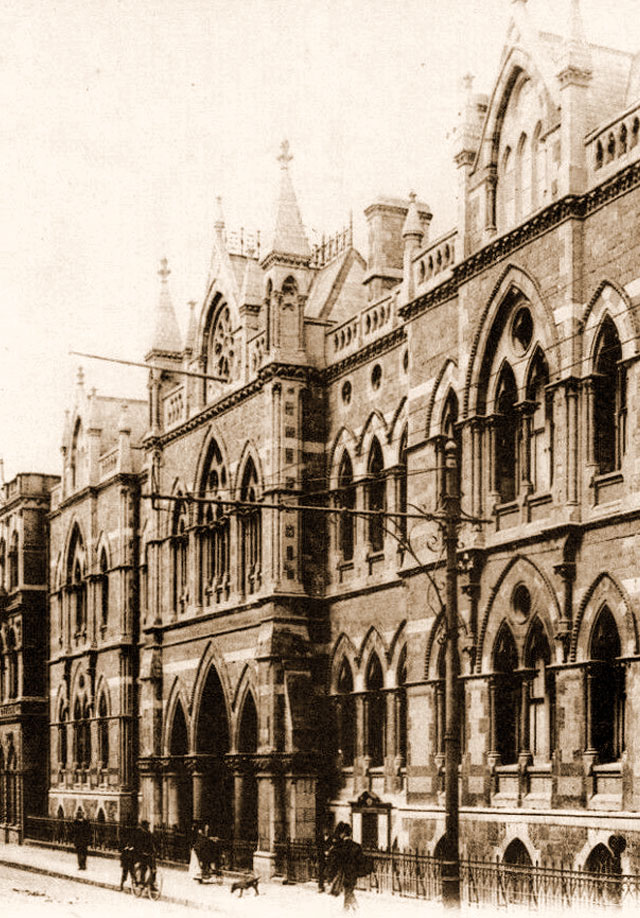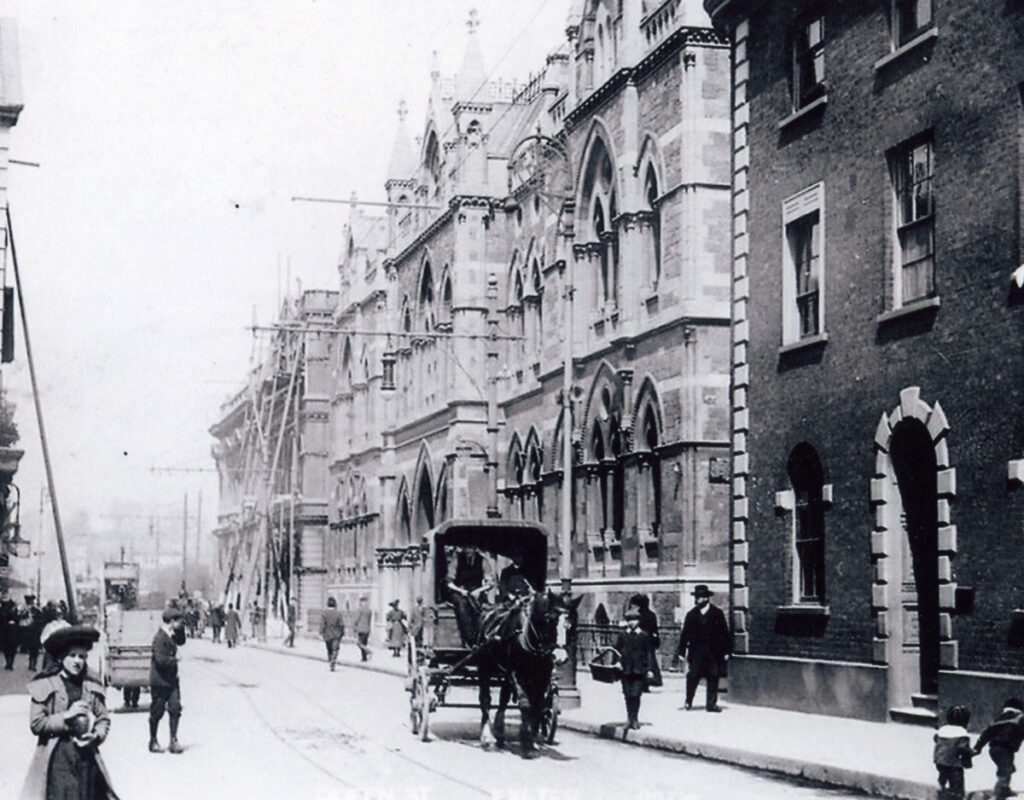Community researcher – Abigail Robinson
The museum, often abbreviated to simply RAMM, was constructed to commemorate Prince Albert following his death in 1861. A fund was launched that same year by Sir Stafford Northcote and John Hayward, who had previously been the architect of St Luke’s College, was chosen as architect following 24 entries in a competition. The foundation stone was laid in 1865 by Richard Sommers Gard, the city’s Member of Parliament.
The cost of Haywood’s Gothic Revival design was estimated at £7,500 but this increased with the museum’s construction. The extensive stonework was completed by Harry Hems who later established a workshop on Longbrook Street. The North Wing was completed in 1868 and the South Wing a year later. A local Exonian firm, Garton and King, installed the heating equipment. Exhibits were stored in Colleton Crescent until the museum was officially opened on
21st April 1868. The mayor declared: ‘I now have the pleasure of declaring this Devon and Exeter Albert Memorial Museum, intended for a School of Art, Science Classes, a Museum, and Free Library, to be open to the general public.’
Queen Victoria donated an autographed copy of her recent book and was highlighted as a valuable addition to the Museum’s collection. Situated in the main entrance is a bust of Prince Albert which was sculpted by E B Stephens, a local artist. Early benefactors include Kent Kingdon who donated artwork and books, Sir Harry Veitch who provided an art collection with items such as Venetian glassware, drawings and paintings, and John Lane who donated ceramics, paintings, drawings and prints from around Devon.
In 1899, the building saw another phase of Victorian expansion which was opened by the Duke and Duchess of York, later King George V and Queen Mary. After their visit, the museum was granted a new title and renamed the Royal Albert Memorial Museum.

